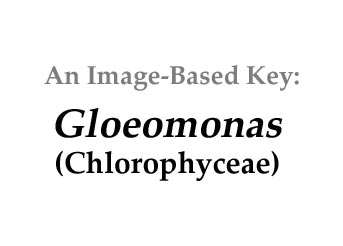|
Home / Chlorophyceae / Unicells / Flagellated / Gloeomonas |
||||
|
|
||||
|
|
||||
|
Click on images for larger format |
||||
Name derivation: |
||||
|
|
||||
Classification: |
||||
Gloeomonas Klebs, 1886; 6 of 7 species descriptions are currently accepted taxonomically (Guiry and Guiry 2013).Order Chlamydomonadales; Family Chlamydomonadaceae
|
||||
Morphology: |
||||
|
Biflagellate ovoid unicells with notably widespread flagellar insertion points and numerous chloroplasts. |
||||
Similar genera: |
||||
|
|
||||
Habitat: |
||||
|
Freshwater in a wide variety of dystrophic and somewhat acidic sphagnum-containing lakes to alkaline calcareous lakes. |
||||
References: |
||||
|
Klebs, G.A. 1886. Über die Organisation der Gallerte bei einigen Algen und Flagellaten. Untersuchungen Botanische Institut Tübingen 2: 333-417, pls III, IV. Guiry, M.D. and G.M. Guiry 2013. AlgaeBase. World-wide electronic publication, National University of Ireland, Galway. http://www.algaebase.org; searched on 16 April 2013. Matsuzaki, R., Y. Hara and H. Nozaki 2012. A taxonomic revision of Chloromonas reticulata (Volvocales, Chlorophyceae), the type species of the genus Chloromonas, based on multigene phylogeny and comparative light and electron microscopy. Phycologia 51(1)”74-85. Nozaki, H, T. Nakada and S. Watanabe 2010. Evolutionary origin of Gloeomonas (Volvocales, Chlorophyceae), based on ultrastructure of chloroplasts and molecular phylogeny. Journal of Phycology 46: 195–201. |
||||

